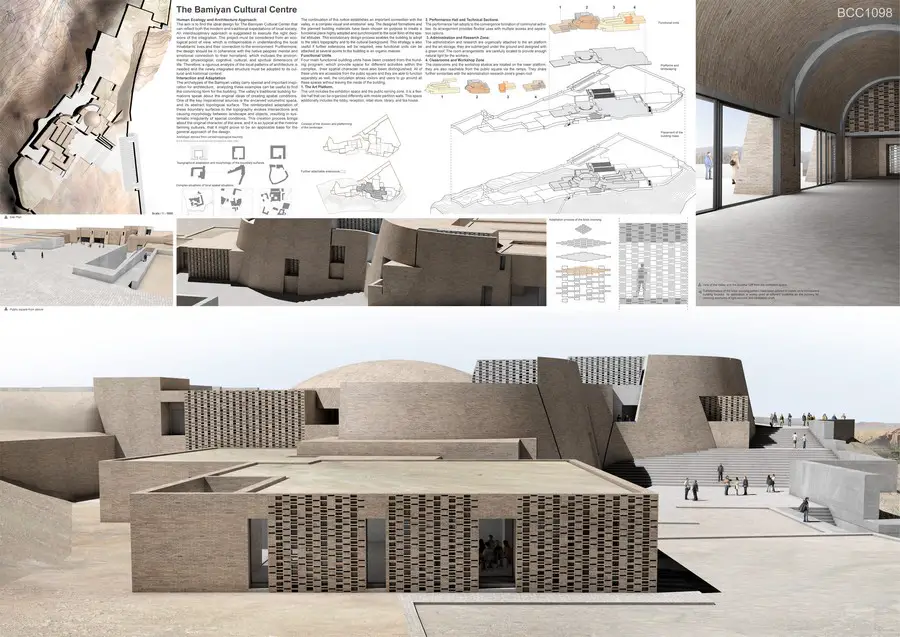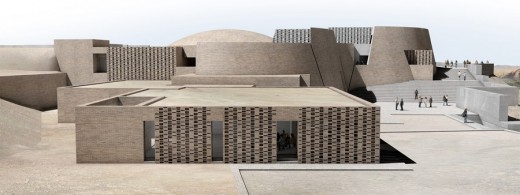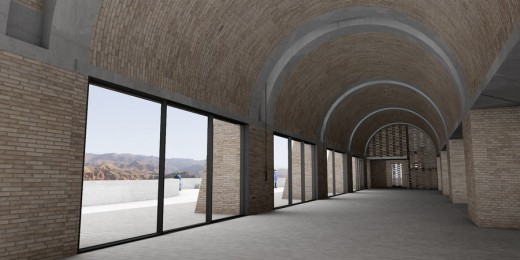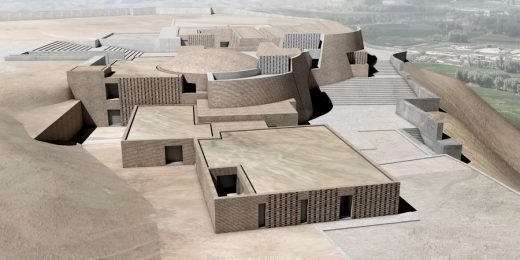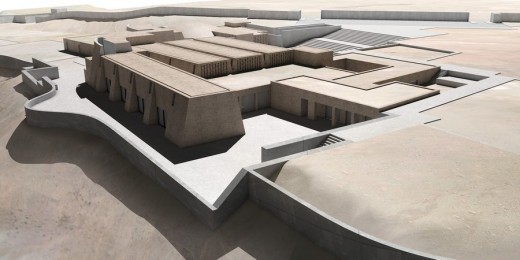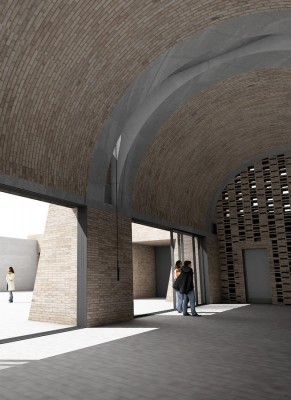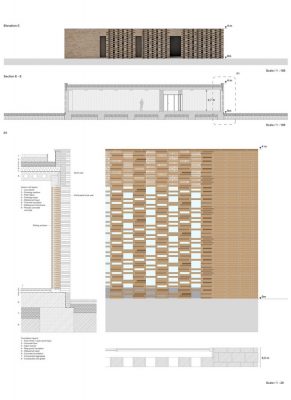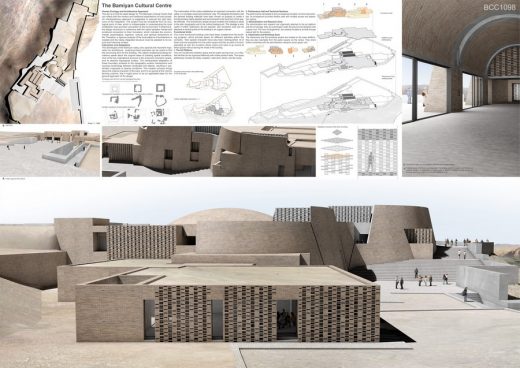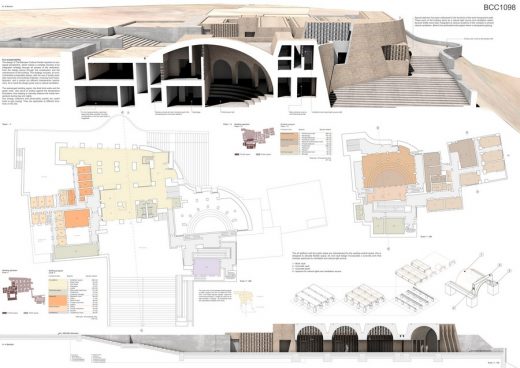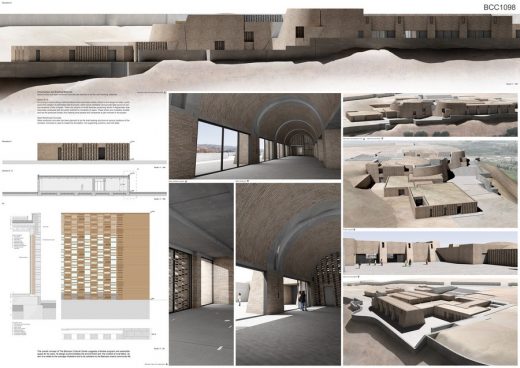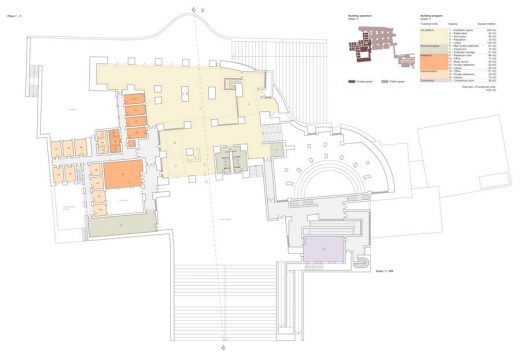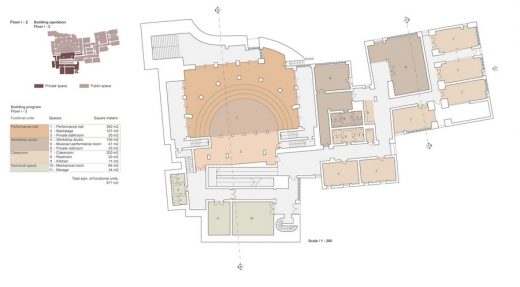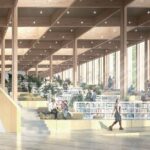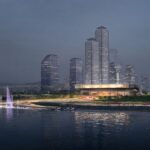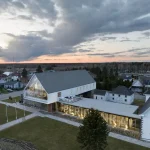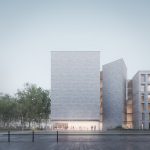Bamiyan Cultural Centre Design Contest, Architects, World Heritage Architecture Contest
Bamiyan Cultural Centre Design
Open International Architects Competition in Afghanistan design by Barna Architects
page updated 9 Oct 2016 with new pictures ; 22 Feb 2015
Organiser: UNESCO in Afghanistan + Afghan Ministry of Information and Culture
Bamiyan Cultural Centre Design Competition News
The Bamiyan Cultural Centre
Design: Barna Architects
Bamiyan Cultural Centre Design Afghanistan
Our focus for the design of the Bamiyan Cultural Center was to find the right form of integration from an ecological perspective, for this reason it is indispensable to understand the local inhabitants’ lives and their connection to the environment. We envisioned a design which is in coherence with the native peoples’ mental and emotional connection to their homeland, including the environmental, physiological, cognitive, cultural, and spiritual dimensions of life.
Project description:
Human Ecology and Architecture Approach
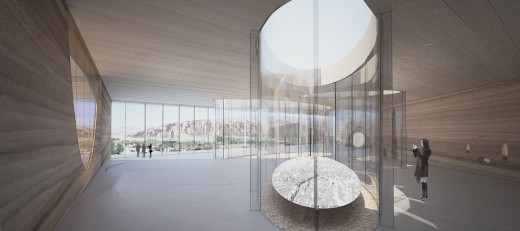
The aim is to find the ideal design for The Bamiyan Cultural Center that can reflect both the modern and traditional expectations of local society. An interdisciplinary approach is suggested to execute the right decisions of the integration.
The project must be considered from an ecological point of view, which is indispensable in understanding the local inhabitants’ lives and their connection to the environment. Furthermore, the design should be in coherence with the native peoples’ mental and emotional connection to their homeland, which includes the environmental, physiological, cognitive, cultural, and spiritual dimensions of life. Therefore, a rigorous analysis of the local patterns of architecture is needed and the newly integrated structure must be adopted to its cultural and historical context.
Interaction and Adaptation: The archetypes of the Bamiyan valley carry special and important inspiration for architecture, analyzing these examples can be useful to find the convincing form for the building. The valley’s traditional building formations speak about the original ideas of creating spatial conditions. One of the key inspirational sources is the carved volumetric space, and its abstract topological surface. The reinterpreted adaptation of these boundary surfaces to the topography evokes intersections causing morphology between landscape and objects, resulting in a systematic irregularity of spatial conditions.
This creation process brings about the original character of the area, and it is so typical at the riverine farming cultures, that it might prove to be an applicable base for the general approach of the design. The continuation of this notion establishes an important connection with the valley, in a complex visual and emotional way. The designed formations and the planned building materials have been chosen on purpose to create a functional place highly adopted and synchronized to the local form of the spatial attitudes. This evolutionary design process enables the building to adopt to the site’s topography and to the cultural background.
Functional Units
Four main functional building units have been created from the building program, which provide space for different activities within the complex, their spatial character have also been distinguished. All of these units are accessible from the public square, and they are able to function separately as well, the circulation allows visitors and users to go around all these spaces without leaving the inside of the building.
1. The Art Platform: This unit includes the exhibition space and the public serving zone, it is a flexible hall that can be organized differently with mobile partition walls. This space additionally includes the lobby, reception, retail store, library, and tea house.
2. Performance Hall and Technical Sections: The performance hall adopts to the convergence formation of communal activities. Its arrangement provides flexible uses with multiple access and separation options.
3. Administration and Research Zone: The administration and research are organically attached to the art platform and the art storage, they are submerged under the ground and designed with a green roof. The room arrangements are carefully located to provide enough natural light for the workers.
4. Classrooms and Workshop Zone: The classrooms and the workshop studios are located on the lower platform, they are also reachable from the public square via the ramps. They share further similarities with the administration research zone’s green roof.
Eco-sustainability
The design of The Bamiyan Cultural Center requires an ecological perspective, which means a complex process of an integration strategy through all phases of the realization, from the design period through the construction and the maintenance of the building. This strategy includes: an environmentally sustainable design, with the use of locally available resources and building materials, involving local manufacturers, and a simple but efficient maintenance mechanism. Special attention has been addressed to the functions of the semi-transparent walls. These parts of the building serve as a natural light source and ventilation option. Several shafts have been integrated at various locations of the complex to ensure natural ventilation.
The submerged building region, the thick brick walls and the green roofs also serve to protect against the temperature fluctuation, thus helping to naturally balance the inside temperature during day and nights. Baked bricks and steel reinforced concrete are planned to be the main building materials.
Baked Brick: According to local building methods baked bricks have been widely utilized in the design for walls, vaults and in the creation of perforated wall structures, which serve ventilation and provide light source at various locations of the complex. There are dozens of small factories producing bricks in Afghanistan that have been produced with the same method for hundreds of years. These bricks are incredibly durable and can be produced locally, thus helping local people and companies to get involved in the project.
Steel Reinforced Concrete: Steel reinforced concrete has been planned to be the load bearing structure at various locations of the complex. Concrete is used to create the foundation, the supporting columns, and roof slabs.
The overall concept of The Bamiyan Cultural Center suggests a flexible program and extensible space for its users, its design accommodates the environment and the context of rural fabric, its aim is to relate to the average inhabitant and to be cohesive to the Bamiyan area’s community life.
Bamiyan Cultural Centre – Building Information
Title: The Bamiyan Cultural Centre
Project Architect: Barna D. Kovacs
Team: Zsuzsa Lukacs, Bea Zsilinszky
Location: Bamiyan, Afghanistan
Project Year: 2015
Total floor area: 2600 sqm
Status: Competition entry
Contact information:
Barna D. Kovacs – 06 20 913 2666 / barna@barna-architects.com
www.barna-architects.com / www.facebook.com/BarnaArchitects
Bamiyan Cultural Centre Design Entry image / information received 22 Feb 2015
24 Nov 2014
Bamiyan Cultural Centre Design Competition Links
Organiser: UNESCO in Afghanistan + Afghan Ministry of Information and Culture
Bamiyan Cultural Centre Design Competition Proposal

picture from design competition organisers
Bamiyan Cultural Centre Design Competition image / information received Nov 2014
Location: Afghanistan, Asia
Islamic Republic of Afghanistan Building Developments
South Asia and Central Asia Architectural Projects – recent selection on e-architect:
Cultural Center of the Russian Federation in Kabul building design by Architectural bureau A.Len:
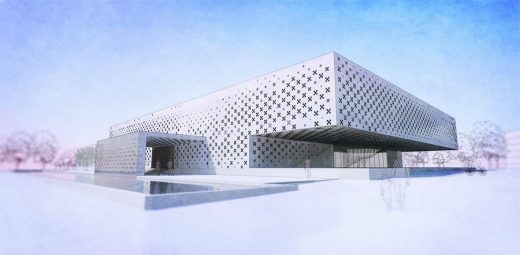
image from architects practice
Cultural Center in Kabul
Architecture Competitions
Russian Architecture Competition, Russia
Nikola-Lenivets Architecture Competition
Ocean Platform Prison Competition – [AC-CA] Architecture Contest
Ocean Platform Prison Architecture Competition
Triumph Pavilion Architecture Competition, London, UK
Triumph Pavilion Architecture Competitions
Comments / photos for the Bamiyan Cultural Centre Design page welcome

